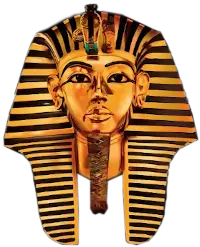
CHAPTER IV:
The Egyptians Educated the Greeks.
1. The Effects of the Persian Conquest.
A. Immigration restrictions against the Greeks are removed and Egypt is thrown open to Greek research.
Owing to the practice of piracy, in which the Ionians and Carians were active, the Egyptians were forced to make immigration laws restricting the immigration of the Greeks and punishing their infringement by capital punishment, i.e., the sacrifice of the victim. Before the time of Psammitichus, the Greeks were not allowed to go beyond the coast of Lower Egypt, but during his reign and that of Amasis, those conditions were modified. For the first time in Egyptian history Ionians and Carians were employed as Mercenaries in the Egyptian Army (670 B.C.), interpretation was organized through a body of interpreters, and the Greeks began to gain useful information concerning the culture of the Egyptians.
In addition to these changes, King Amasis removed the restrictions against the Greeks and permitted them to enter Egypt and settle in Naucratis. About this same time, i.e., the reign of Amasis, the Persians, through Cambyses invaded Egypt, and the whole country was thrown open to the researches of the Greeks.
B. The Genesis of Greek Enlightenment.
The Persian invasion, did not only provide the Greeks with ample research, but stimulated the creation of prose history in Ionia. Heretofore, the Greeks had little or no accurate knowledge of Egyptian culture: but their contact with Egypt resulted in the genesis of their enlightenment. (Ovid Fasti III 338; Herodotus Bk. II p. 113; Plutarch p. 380; Eratosthenes ap Strabo 801-802; Diogenes Bk. IX 49).
Topics
Greek Philospohy is Stolen Egyptian Philosophy
The Memphite Theology is the Basis of all Important Doctrines of Greek Philosophy
Greek Philosophy was Alien to the Greeks
Greek Philosophy was the offspring of the Egyptian Mystery System
The Egyptians Educated the Greeks
The Curriculum of the Egyptian Mystery System
The Pre-Socratic Philosophers and the teaching Ascribed to them
The Athenian Philosophers
1. Socrates
2. Plato
3. Aristotle